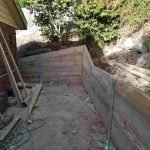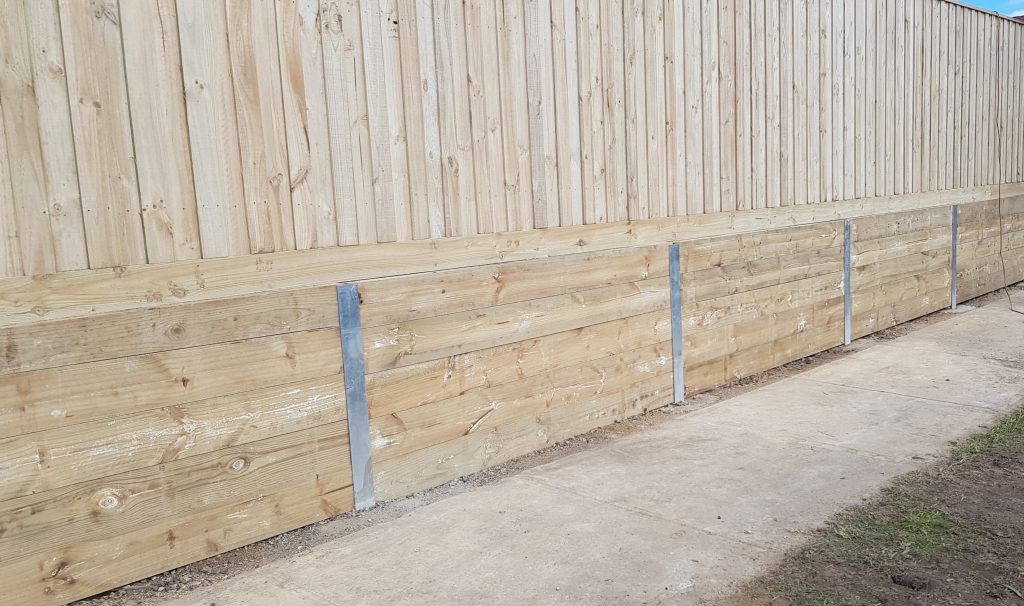Introduction
Building a keeping wall is more than simply stacking stones or putting timber; it's an art that mixes engineering principles, design visual appeals, and useful performance. As we look into From Principle to Completion: A Day in the Life of a Retaining Wall Builder, you'll find the complexities involved in this interesting occupation. Whether it's managing concrete sleepers, H beams, or wood sleepers, every element plays a pivotal role in ensuring that the structure not just looks good however likewise stands the test of time.
What is a Keeping Wall?
A retaining wall is a structure designed to keep back soil and avoid erosion on sloped surfaces. These walls are vital for maintaining landscape stability and can be made from various materials such as stone, wood, and concrete.
The Function of a Retaining Wall Installer
A retaining wall installer is responsible for changing strategies into tangible structures. They work carefully with designers and landscape designers to guarantee that the ended up product fulfills both practical https://tuffstuffretainingwalls.com.au/ and aesthetic criteria.
Understanding the Different Types of Maintaining Walls
Concrete Sleepers
Concrete sleepers are pre-cast blocks utilized for their toughness and resilience. They offer outstanding support for heavy loads and are resistant to rot and pest damage.

H Beams
H beams provide considerable structural assistance due to their shape, making them ideal for taller retaining walls where extra strength is required.
Wood Sleepers
Though aesthetically appealing, wood sleepers require regular upkeep due to their vulnerability to decay. Nevertheless, they can offer a warm visual that mixes well with natural landscapes.
Timber Sleepers
Timber sleepers are often utilized in property tasks where less height is needed. They can produce a rustic charm however featured issues about longevity.
Stone Retaining Walls
Stone walls are classic and can include immense worth to residential or commercial properties. Their natural appearance makes them popular in landscaping designs however requires skilled craftsmanship for correct installation.
The Preliminary Consultation: What Takes Place First?
During the initial assessment phase, a retaining wall contractor consults with clients to discuss their needs and preferences. This stage includes website assessments, understanding drain issues, and identifying product choices.
Planning & Style Stage: Crafting the Blueprint
Once initial conversations conclude, detailed blueprints are developed. This plan includes measurements, material requirements (be it concrete sleeper or stone), and drainage solutions.
Permits & Regulations: Navigating Legalities
Before building and construction begins, securing essential permits is essential. Building codes differ by area; hence understanding regional guidelines ensures compliance throughout the project.
Preparing the Site: Clearing & Excavation Work
Preparing the site involves cleaning vegetation and debris followed by excavation work. This action lays the foundation for a structurally sound keeping wall.
Material Choice: Choosing The Right Components
Selecting materials lines up closely with style goals while likewise thinking about budget restraints. Aspects like toughness (concrete vs. timber sleeper) play a vital function in this decision-making process.
Foundation Work: The Importance of Stability
A solid structure is non-negotiable when constructing any maintaining wall. Whether using H beams or stone, making sure stability avoids future collapses or shifts.
Construction Process: Step-By-Step Execution
Lay Out The Plan
Utilizing stakes and string lines helps visualize where each element will go.
Excavate For The Base

Install Drainage Solutions
Correct drain systems prevent soil saturation behind walls.
Constructing The Wall
Depending on chosen materials (like concrete sleepers), walls might be constructed layer by layer.
Backfilling
Once installed, backfilling assists support the structure while guaranteeing appropriate drainage.
Finish Work
Including any preferred features like caps or decorative aspects finishes the look.
Tools of The Trade: Necessary Devices For Builders
Having an array of tools at hand makes all jobs simpler:
- Shovels & & Picks Levels Compactors Trowels Power Tools
Quality Control Measures Throughout Construction
Quality control guarantees that every aspect fulfills market requirements:
- Regular Inspections Material Testing Adherence To Plans
Addressing Challenges On-Site: Problem-Solving Abilities Required
No construction task goes off without a hitch! From unexpected weather condition changes to material lacks-- being versatile is key!
Final Touches: Aesthetic Enhancements For Your Keeping Wall
After building comes beautification:
Landscaping around it Adding plants or lighting Painting or staining wood structuresMaintenance Tips For Durability Of Retaining Walls
To extend the life of your keeping wall:
- Regularly examine for fractures Clean debris Check drain systems
Common Frequently asked questions About Retaining Walls
1. What products are best for developing keeping walls?
Choosing in between concrete sleeper, stone, timber sleeper depends upon visual preference and structural requirements.
2. How high can my retaining wall be?
Local guidelines determine height limits; typically in between 4-- 6 feet without unique permits.

3. Do I require preparing permission?
In most cases yes; inspect regional building regulations before starting construction.
4. Can I install a maintaining wall myself?
While DIY is possible, hiring professionals makes sure safety and compliance with regulations.
5. How do I keep my keeping wall?
Regular assessments ought to focus on checking for fractures or drain concerns; immediate repair work boost longevity!
6. Are keeping walls expensive?
Costs vary based upon materials selected(e.g., wood vs stone)together with labor costs involved.
Conclusion
In conclusion, building a retaining wall involves precise preparation from start to finish-- hence why comprehending every action in this journey from idea through completion matters tremendously! From picking materials like concrete sleepers or lumber to browsing legal requirements-- it's clear how detailed this process genuinely is! So next time you see one standing high versus nature's forces-- take a moment to value all that entered into creating it!